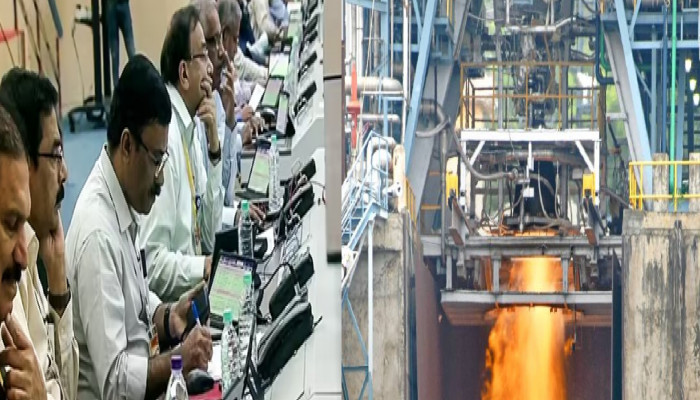ISRO successfully conducts vacuum ignition trial of cryogenic engine
- In Reports
- 08:12 PM, Feb 08, 2025
- Myind Staff
ISRO announced on Saturday that it has successfully tested the ignition of the CE20 cryogenic engine, which powers the upper stage of the LVM3 rocket. The test used a Multi-element igniter under vacuum conditions, replicating how the engine ignites in the vacuum of space.
“This test was carried out on Friday in the High Altitude Test Facility at ISRO Propulsion Complex, Mahendragiri, Tamil Nadu,” ISRO said in a statement. For India's ambitious crewed space mission, Gaganyaan, this engine is essential. During this test, the engine's Thrust Chamber was ignited using a multi-element igniter in a vacuum. The conditions matched the expected tank pressure at the time of restarting the cryogenic engine during flight. Both the engine and the testing facility performed normally and as expected.
As part of research on the restart procedure, ISRO is investigating starting turbopumps in bootstrap mode instead of the stored gas system since restarting a cryogenic engine is intrinsically complicated. In this method, both the thrust chamber and gas generator are designed to restart using the natural pressure from the fuel tanks. ISRO has planned a series of tests to achieve engine ignition in bootstrap mode, improving the ability of cryogenic engines to restart multiple times during flight.
Earlier, an engine ignition test using a multi-element igniter was conducted on the ground, outside the vacuum chamber. "The engine is already qualified to operate for thrust levels ranging from 19t to 22t in flight with a single start and is qualified for the Gaganyaan mission," ISRO said. The Liquid Propulsion Systems Centre of ISRO developed the engine.







Comments